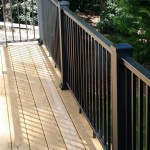How To Fix Uneven Patio Pavers on Sandy Soil
Uneven patio pavers can detract from the aesthetic appeal of an outdoor space and create potential tripping hazards. This issue is often exacerbated when pavers are installed on sandy soil, which tends to shift and settle over time. Addressing uneven pavers requires careful planning and execution to ensure a stable and long-lasting surface. This article provides a comprehensive guide to fixing uneven patio pavers on sandy soil, including necessary tools, materials, and step-by-step instructions.
Before embarking on the repair process, it is crucial to understand why sandy soil poses a particular challenge. Sandy soil is characterized by its large particle size and poor water retention. Consequently, it compacts easily under weight and is prone to erosion. This instability can lead to the base layer beneath the pavers shifting, resulting in unevenness. Therefore, the repair strategy should focus on creating a solid and well-compacted base that resists settling.
Identifying the Cause of Unevenness
The first step in fixing uneven patio pavers is to identify the underlying cause of the problem. This involves a thorough inspection of the affected area. Look for patterns in the unevenness, such as all pavers in a specific area being lower than others, or individual pavers being significantly out of alignment. Common causes include:
Insufficient Base Layer: A base layer that is too thin or inadequately compacted will inevitably lead to settling. The recommended base depth for patios on sandy soil is typically between 6 and 8 inches.
Inadequate Compaction: Proper compaction of the base layer is essential for creating a stable foundation. Insufficient compaction allows the sand to shift and settle unevenly, causing the pavers to sink. A plate compactor is usually required to achieve adequate compaction.
Erosion: Water runoff can erode the sand beneath the pavers, especially if there is insufficient drainage. Observe the surrounding area for signs of water pooling or channeling.
Root Intrusion: Tree roots or other vegetation can grow beneath the pavers, disrupting the base layer and causing unevenness. Look for signs of root activity near the affected area.
Poor Paver Installation: Initial installation errors, such as inconsistent sand bedding or improper paver alignment, can contribute to unevenness over time.
Once the likely cause(s) have been identified, a targeted repair strategy can be developed.
Gathering Necessary Tools and Materials
Having the right tools and materials on hand is essential for a successful paver repair project. The following list includes the items typically required:
Pavers: Extra pavers matching the existing ones are necessary to replace any damaged or broken pavers. Ensure the color and style are consistent.
Sand: Paver leveling sand, also known as joint sand, is used to fill the joints between the pavers and provide a level surface. Polymeric sand is recommended for sandy soil as it hardens and helps prevent weed growth and erosion.
Base Material: Crushed stone, such as road base or gravel, is used to create the base layer. Granular fill is often preferred for areas prone to movement.
Plate Compactor: A plate compactor is used to compact the base layer and the paver leveling sand. This is crucial for creating a stable foundation that resists settling.
Shovel: A shovel is needed for digging and moving base material and sand.
Wheelbarrow: A wheelbarrow is helpful for transporting large quantities of materials.
Level: A level is essential for ensuring the pavers are properly aligned and level.
Rubber Mallet: A rubber mallet is used to gently tap the pavers into place.
Measuring Tape: A measuring tape is needed for accurately measuring the area and the depth of the base layer.
Gloves: Gloves protect hands from abrasion and contact with materials.
Safety Glasses: Safety glasses protect eyes from dust and debris.
Screwdriver or Putty Knife: These tools can be used to help remove existing pavers.
Landscape Fabric (Optional): Landscape fabric can be placed beneath the base layer to help prevent weed growth and stabilize the soil.
Having all these materials readily available will streamline the repair process and minimize delays.
Step-by-Step Repair Process
The following steps outline the process for fixing uneven patio pavers on sandy soil. The exact steps may vary slightly depending on the specific circumstances and the extent of the unevenness.
Step 1: Remove the Uneven Pavers: Carefully remove the uneven pavers. Use a screwdriver or putty knife to loosen the sand around the pavers. If the pavers are tightly interlocked, a pry bar may be necessary. Be careful not to damage the surrounding pavers. Set the removed pavers aside for reuse, if possible.
Step 2: Excavate the Area: Dig out the existing base material to the required depth. For a patio on sandy soil, a base depth of 6 to 8 inches is recommended. Ensure the excavation extends beyond the affected area to create a stable foundation for the repaired section. Use a shovel and wheelbarrow to remove the excavated material.
Step 3: Install Landscape Fabric (Optional): If desired, lay landscape fabric over the exposed soil. This will help prevent weed growth and stabilize the soil, particularly in sandy areas.
Step 4: Add the Base Material: Pour the crushed stone or gravel into the excavated area. Spread it evenly with a shovel. Add the base material in layers, compacting each layer thoroughly with a plate compactor. This is a crucial step for creating a stable foundation that resists settling. Aim for lifts of no more than 2-3 inches for each compaction pass.
Step 5: Level the Base Layer: After compacting the base material, use a level and a straight edge to ensure the surface is flat and even. Add or remove base material as needed to achieve a level surface. A slight slope away from any structures is recommended for drainage.
Step 6: Add the Sand Bedding Layer: Spread a 1-inch layer of paver leveling sand over the compacted base material. Use a screed board or a similar tool to create a smooth and even surface. This layer provides a final bedding surface for the pavers.
Step 7: Place the Pavers: Carefully place the pavers back into their original positions. Ensure the pavers are aligned with the surrounding pavers and that the joints are consistent. Use a rubber mallet to gently tap the pavers into place, ensuring they are level and flush with the surrounding surface. Use a level frequently to check for accuracy.
Step 8: Fill the Joints with Sand: Once all the pavers are in place, sweep paver leveling sand into the joints between the pavers. Use a broom to thoroughly work the sand into the joints. Several passes may be necessary to completely fill the joints. For sandy soil, polymeric sand is recommended to help stabilize the pavers and prevent erosion.
Step 9: Compact the Pavers Again: After filling the joints with sand, use a plate compactor with a rubber pad attachment to compact the pavers and set the sand in place. This will further stabilize the pavers and prevent settling.
Step 10: Water the Pavers (if using Polymeric Sand): If polymeric sand was used, lightly water the pavers according to the manufacturer's instructions. This will activate the binding agents in the polymeric sand and create a more durable and stable surface. Avoid overwatering, as this can wash away the polymeric sand.
Step 11: Allow to Cure: Allow the pavers to cure for the recommended time period, as specified by the polymeric sand manufacturer. This will typically be 24 to 48 hours. During this time, avoid walking on the pavers.
Following these steps carefully will help ensure a stable and level patio that can withstand the challenges posed by sandy soil.

How To Fix Uneven Patio Pavers

How To Fix Uneven Pavers Fixing Sinking Guide

How To Reset Pavers The Potato
Uneven Paver Patio Surface And Solutions

Diy Guide To Fixing Uneven Patio Stones Easily

How To Replace Sand Between Pavers Easy Guide

Raising And Leveling Sunken Patio Pavers Toolbox Divas

How To Use Polymeric Sand Block Weeds In Our Paver Patio Young House Love

How To Fix Sinking Pavers Davel Construction Inc

How To Repair Sinking Patio Pavers Splendour In Stone
Related Posts








